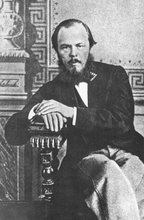 Here is a link to a site about Ivan Kramskoy, the Russian painter Dostoevsky mentions that resemles Smerdyakov unique combination of perspacity and distraction, at page 126: http://www.asopa.com/publications/2002december/kramskoy.htm. The painting that many assume is "The Contemplator" is also sometimes called "The Mediator." It may be seen at this link: http://www013.upp.so-net.ne.jp/hongirai-san/yomou/meisou.htmll. Dostoevsky's describes the painting as of "a stray little peasant in a ragged caftan and bast shoes; he stands as if lost in thought, but he is not thinking, he is 'contemplating' something. . . . If you nudged him, he would give a start and look at you as if you had just woken him up . . . he would most likely keep hidden away in himself the impression he had been under while contemplating. These impressions are dear to him, and he is most likely storing them up imperceptibly . . . why and what for, of course, he does not know either; perhaps suddenly, having stored up his impressions over many years, he will drop everything and wander off to Jerusalem to save his soul, or perhaps he will suddenly burn down his native village, or perhaps he will do both . . . Most likely Smerdyakov, too, was such a contemplator, and most likely he, too, was greedily storing up his impressions, almost without knowing why himself" (127). But this is an interlude post, for visual refreshment, and the Kramskoy painting was lousy, I would even say a fake dumbed up to please the Dostoevskians (see how much better Kramskoy's portraits are on the other site), so instead I found this one, which is quite lovely. Imagine that this is Grushenka, in a more relaxed moment, without her black wig, and old Maximov, the charity case, and Fenya the maid's grandmother, having a cup of tea. The tablecloth, obviously, also ends up in Smerdyakov's room along with Grushenka's sofa, for some reason. ["The walls were adorned with blue wallpaper . . . the furniture was negligible: two benches along the walls and and two chairs by the table. But the table, though it was a simple wooden one, was nevertheless covered by a tablecloth with random pink designs. There was also a pot of geraniums in each of the two windows. In the corner stood was an icon stand with icons. On the table stood a small, badly dented, copper samovar and a tray with two cups" (612)].
Here is a link to a site about Ivan Kramskoy, the Russian painter Dostoevsky mentions that resemles Smerdyakov unique combination of perspacity and distraction, at page 126: http://www.asopa.com/publications/2002december/kramskoy.htm. The painting that many assume is "The Contemplator" is also sometimes called "The Mediator." It may be seen at this link: http://www013.upp.so-net.ne.jp/hongirai-san/yomou/meisou.htmll. Dostoevsky's describes the painting as of "a stray little peasant in a ragged caftan and bast shoes; he stands as if lost in thought, but he is not thinking, he is 'contemplating' something. . . . If you nudged him, he would give a start and look at you as if you had just woken him up . . . he would most likely keep hidden away in himself the impression he had been under while contemplating. These impressions are dear to him, and he is most likely storing them up imperceptibly . . . why and what for, of course, he does not know either; perhaps suddenly, having stored up his impressions over many years, he will drop everything and wander off to Jerusalem to save his soul, or perhaps he will suddenly burn down his native village, or perhaps he will do both . . . Most likely Smerdyakov, too, was such a contemplator, and most likely he, too, was greedily storing up his impressions, almost without knowing why himself" (127). But this is an interlude post, for visual refreshment, and the Kramskoy painting was lousy, I would even say a fake dumbed up to please the Dostoevskians (see how much better Kramskoy's portraits are on the other site), so instead I found this one, which is quite lovely. Imagine that this is Grushenka, in a more relaxed moment, without her black wig, and old Maximov, the charity case, and Fenya the maid's grandmother, having a cup of tea. The tablecloth, obviously, also ends up in Smerdyakov's room along with Grushenka's sofa, for some reason. ["The walls were adorned with blue wallpaper . . . the furniture was negligible: two benches along the walls and and two chairs by the table. But the table, though it was a simple wooden one, was nevertheless covered by a tablecloth with random pink designs. There was also a pot of geraniums in each of the two windows. In the corner stood was an icon stand with icons. On the table stood a small, badly dented, copper samovar and a tray with two cups" (612)].Photo credit: Detail of a 19th c. painting, "The Prose of Life," by Vasily Baksheev, (1862-1958), found at Rollins College's Russian Art website. Baksheev studied in Moscow in the 1880s, and exhibited in Moscow in the 1930s and 40s. It is exciting to contemplate that the artist's work, perhaps even this picture, may have been seen by both Dostoevsky (1821-1889) and Bakhtin (1895-1975).
